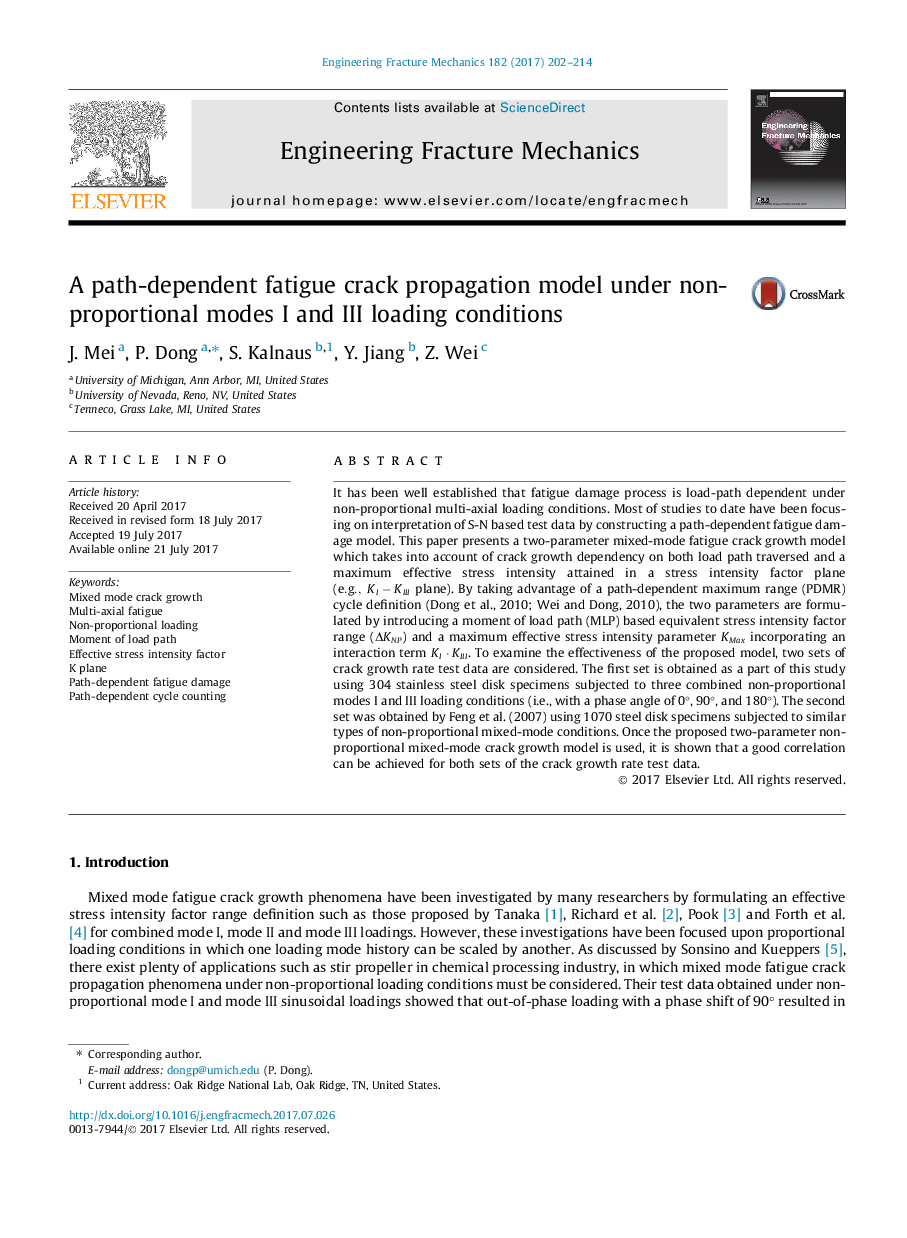| Article ID | Journal | Published Year | Pages | File Type |
|---|---|---|---|---|
| 5013804 | Engineering Fracture Mechanics | 2017 | 13 Pages |
Abstract
It has been well established that fatigue damage process is load-path dependent under non-proportional multi-axial loading conditions. Most of studies to date have been focusing on interpretation of S-N based test data by constructing a path-dependent fatigue damage model. This paper presents a two-parameter mixed-mode fatigue crack growth model which takes into account of crack growth dependency on both load path traversed and a maximum effective stress intensity attained in a stress intensity factor plane (e.g.,KI-KIII plane). By taking advantage of a path-dependent maximum range (PDMR) cycle definition (Dong et al., 2010; Wei and Dong, 2010), the two parameters are formulated by introducing a moment of load path (MLP) based equivalent stress intensity factor range (ÎKNP) and a maximum effective stress intensity parameter KMax incorporating an interaction term KI·KIII. To examine the effectiveness of the proposed model, two sets of crack growth rate test data are considered. The first set is obtained as a part of this study using 304 stainless steel disk specimens subjected to three combined non-proportional modes I and III loading conditions (i.e., with a phase angle of 0°, 90°, and 180°). The second set was obtained by Feng et al. (2007) using 1070 steel disk specimens subjected to similar types of non-proportional mixed-mode conditions. Once the proposed two-parameter non-proportional mixed-mode crack growth model is used, it is shown that a good correlation can be achieved for both sets of the crack growth rate test data.
Keywords
Related Topics
Physical Sciences and Engineering
Engineering
Mechanical Engineering
Authors
J. Mei, P. Dong, S. Kalnaus, Y. Jiang, Z. Wei,
